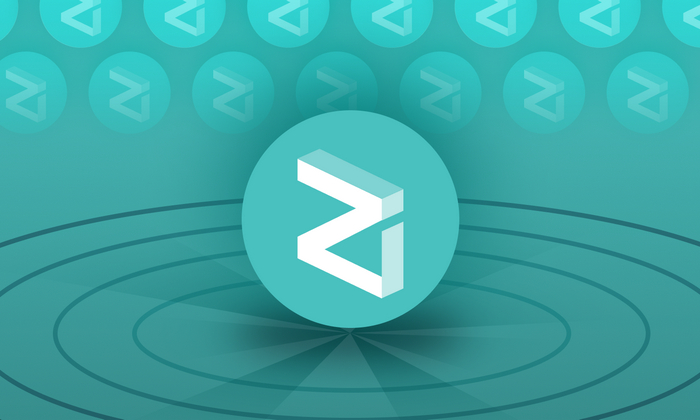-
 Bitcoin
Bitcoin $104,224.1974
1.01% -
 Ethereum
Ethereum $2,560.3829
9.12% -
 Tether USDt
Tether USDt $1.0001
0.02% -
 XRP
XRP $2.4174
1.83% -
 BNB
BNB $663.5043
-1.34% -
 Solana
Solana $177.4403
3.04% -
 USDC
USDC $1.0000
0.01% -
 Dogecoin
Dogecoin $0.2429
16.33% -
 Cardano
Cardano $0.8208
4.26% -
 TRON
TRON $0.2649
0.31% -
 Sui
Sui $4.0677
1.34% -
 Chainlink
Chainlink $17.0611
5.71% -
 Avalanche
Avalanche $25.5486
8.39% -
 Stellar
Stellar $0.3148
4.71% -
 Shiba Inu
Shiba Inu $0.0...01654
8.84% -
 Hedera
Hedera $0.2151
5.77% -
 Toncoin
Toncoin $3.5072
5.98% -
 Hyperliquid
Hyperliquid $25.8795
4.49% -
 Bitcoin Cash
Bitcoin Cash $428.3413
2.84% -
 Polkadot
Polkadot $5.1326
3.07% -
 Litecoin
Litecoin $104.9330
0.87% -
 UNUS SED LEO
UNUS SED LEO $8.2670
-4.90% -
 Monero
Monero $326.7171
5.26% -
 Pi
Pi $0.8475
15.23% -
 Bitget Token
Bitget Token $4.9279
7.16% -
 Pepe
Pepe $0.0...01320
5.67% -
 Dai
Dai $0.9999
-0.02% -
 Ethena USDe
Ethena USDe $1.0002
0.02% -
 Uniswap
Uniswap $7.3533
13.01% -
 Bittensor
Bittensor $461.6048
6.94%
What is ZIL coin? Introduction to the issue price, total amount and white paper of ZIL coin
Zilliqa's native ZIL coin, utilized in a sharded blockchain structure, enables high transaction throughput and low fees, supporting smart contract deployment, staking, and DeFi applications.
Nov 06, 2024 at 04:30 am

Zilliqa (ZIL) Coin: A Comprehensive Guide
1. What is ZIL Coin?
ZIL coin is the native cryptocurrency of Zilliqa, a blockchain platform designed to solve the scalability issues faced by Ethereum and other blockchain networks. It utilizes sharding technology to split the network into smaller partitions (shards), allowing it to handle more transactions and reduce transaction fees.
2. Issue Price and Total Amount
ZIL coin was initially offered through an initial coin offering (ICO) in December 2017. The issue price was $0.01 per ZIL. The total supply of ZIL coins is 21 billion, with 10.5 billion released during the ICO.
3. White Paper
The Zilliqa white paper, published in March 2017, outlines the technical architecture and capabilities of the Zilliqa blockchain. It describes the sharding protocol, consensus algorithm, and smart contract functionality.
Key Features of ZIL Coin:
- Scalability: Zilliqa has the potential to process thousands of transactions per second, making it more scalable than Ethereum and other blockchains.
- Low transaction fees: Due to its increased efficiency, transaction fees on the Zilliqa network are typically low.
- Smart contract support: Zilliqa supports smart contracts, enabling the development and deployment of decentralized applications.
- Privacy features: Zilliqa offers optional privacy features, allowing users to engage in private and anonymous transactions.
- Proof-of-Work (PoW) and Proof-of-Stake (PoS) consensus: Zilliqa initially used PoW for consensus but later transitioned to PoS, which is more energy-efficient and secure.
Use Cases of ZIL Coin:
- Transaction fees: ZIL is used to pay for transaction fees on the Zilliqa network.
- Staking: ZIL holders can stake their coins to contribute to the security of the network and earn rewards.
- Smart contract gas: Smart contracts on Zilliqa require ZIL coins as gas to execute transactions.
- DeFi applications: ZIL coin can be used in decentralized finance (DeFi) applications built on the Zilliqa platform.
Conclusion
ZIL coin is an important component of the Zilliqa ecosystem, providing scalability, security, and utility. Its features and use cases make it suitable for a wide range of applications in the blockchain industry.
Disclaimer:info@kdj.com
The information provided is not trading advice. kdj.com does not assume any responsibility for any investments made based on the information provided in this article. Cryptocurrencies are highly volatile and it is highly recommended that you invest with caution after thorough research!
If you believe that the content used on this website infringes your copyright, please contact us immediately (info@kdj.com) and we will delete it promptly.
- Ruvi (RUVI) is the Next Big Thing in Crypto, Combining Blockchain and AI
- 2025-05-11 10:20:12
- New players have entered the Bitcoin field, leading the previous cycle prediction to no longer be correct
- 2025-05-11 10:20:12
- Dogecoin (DOGE) Shows Strong Upward Signs, Could Push Toward $0.65
- 2025-05-11 10:15:23
- The volatility of XRP prices has attracted widespread attention in the cloud mining space
- 2025-05-11 10:15:23
- Bitcoin Just Crossed $100,000, Here Are 5 Altcoins to Buy the Dip
- 2025-05-11 10:10:12
- Shiba Inu Whales Now Transfer 2.79 Trillion SHIB Tokens Within the Past 24 Hours, After a Period of Declining Engagement
- 2025-05-11 10:10:12
Related knowledge

What is Ethereum’s Slashing mechanism and how to punish malicious behavior?
Feb 20,2025 at 03:08am
Key PointsOverview of slashingDifferent types of slashing in EthereumIncentives and consequences of slashingIdentifying and reporting slashed validatorsOngoing discussions and potential improvementsEthereum's Slashing Mechanism: Punishing Malicious BehaviorEthereum's slashing mechanism is an essential tool for ensuring network security and punishing mal...

What is the verifier node of Ethereum and how to become a verifier?
Feb 19,2025 at 06:00pm
The Verifier Node of Ethereum: A Comprehensive GuideKey Points:What is a Verifier Node?How to Become a Verifier NodeResponsibilities and Rewards of a Verifier NodeMinimum Requirements for Becoming a Verifier NodePotential Difficulties in Running a Verifier Node1. What is a Verifier Node?A Verifier Node is an independent entity on the Ethereum network th...

What is Ethereum’s staking, and how to participate and earn money?
Feb 19,2025 at 04:37pm
Key Points:Understanding Ethereum's Staking MechanismSteps to Participate in StakingBenefits and Rewards of StakingSecurity and Risk ConsiderationsTechnical Requirements and Hardware OptionsPotential Challenges and Troubleshooting TipsFAQs on Ethereum StakingWhat is Ethereum's Staking?Proof-of-Stake (PoS) is a consensus mechanism used in blockchain netw...

What is Ethereum’s DAO (Decentralized Autonomous Organization) and how does it work?
Feb 20,2025 at 03:12am
Key PointsDefinition and Structure of a DAOGovernance and Decision-Making in DAOsBenefits and Use Cases of DAOsChallenges and Limitations of DAOsWhat is Ethereum's DAO (Decentralized Autonomous Organization) and How Does It Work?Definition and Structure of a DAOA Decentralized Autonomous Organization (DAO) is an innovative governance and management fram...

What is Ethereum's multi-signature wallet and how to improve security?
Feb 20,2025 at 02:18pm
Key Points:Understanding the Concept of a Multi-Signature WalletBenefits and Drawbacks of Multisig WalletsRequirements for Setting Up a Multisig WalletStep-by-Step Guide to Generating a Multisig WalletImplementing Strategies for Enhanced Security1. Understanding the Concept of a Multi-Signature WalletA multi-signature (multisig) wallet in the Ethereum e...

What is Ethereum's oracle and how to provide data for smart contracts?
Feb 21,2025 at 01:30am
Key Points:Understanding the concept of oracles in EthereumExploring different types of oraclesDetailed guide on how to provide data for smart contractsAddressing potential challenges and considerationsWhat is Ethereum's Oracle?Oracles are crucial components in the Ethereum ecosystem, enabling smart contracts to access real-world data and off-chain even...

What is Ethereum’s Slashing mechanism and how to punish malicious behavior?
Feb 20,2025 at 03:08am
Key PointsOverview of slashingDifferent types of slashing in EthereumIncentives and consequences of slashingIdentifying and reporting slashed validatorsOngoing discussions and potential improvementsEthereum's Slashing Mechanism: Punishing Malicious BehaviorEthereum's slashing mechanism is an essential tool for ensuring network security and punishing mal...

What is the verifier node of Ethereum and how to become a verifier?
Feb 19,2025 at 06:00pm
The Verifier Node of Ethereum: A Comprehensive GuideKey Points:What is a Verifier Node?How to Become a Verifier NodeResponsibilities and Rewards of a Verifier NodeMinimum Requirements for Becoming a Verifier NodePotential Difficulties in Running a Verifier Node1. What is a Verifier Node?A Verifier Node is an independent entity on the Ethereum network th...

What is Ethereum’s staking, and how to participate and earn money?
Feb 19,2025 at 04:37pm
Key Points:Understanding Ethereum's Staking MechanismSteps to Participate in StakingBenefits and Rewards of StakingSecurity and Risk ConsiderationsTechnical Requirements and Hardware OptionsPotential Challenges and Troubleshooting TipsFAQs on Ethereum StakingWhat is Ethereum's Staking?Proof-of-Stake (PoS) is a consensus mechanism used in blockchain netw...

What is Ethereum’s DAO (Decentralized Autonomous Organization) and how does it work?
Feb 20,2025 at 03:12am
Key PointsDefinition and Structure of a DAOGovernance and Decision-Making in DAOsBenefits and Use Cases of DAOsChallenges and Limitations of DAOsWhat is Ethereum's DAO (Decentralized Autonomous Organization) and How Does It Work?Definition and Structure of a DAOA Decentralized Autonomous Organization (DAO) is an innovative governance and management fram...

What is Ethereum's multi-signature wallet and how to improve security?
Feb 20,2025 at 02:18pm
Key Points:Understanding the Concept of a Multi-Signature WalletBenefits and Drawbacks of Multisig WalletsRequirements for Setting Up a Multisig WalletStep-by-Step Guide to Generating a Multisig WalletImplementing Strategies for Enhanced Security1. Understanding the Concept of a Multi-Signature WalletA multi-signature (multisig) wallet in the Ethereum e...

What is Ethereum's oracle and how to provide data for smart contracts?
Feb 21,2025 at 01:30am
Key Points:Understanding the concept of oracles in EthereumExploring different types of oraclesDetailed guide on how to provide data for smart contractsAddressing potential challenges and considerationsWhat is Ethereum's Oracle?Oracles are crucial components in the Ethereum ecosystem, enabling smart contracts to access real-world data and off-chain even...
See all articles






















































































